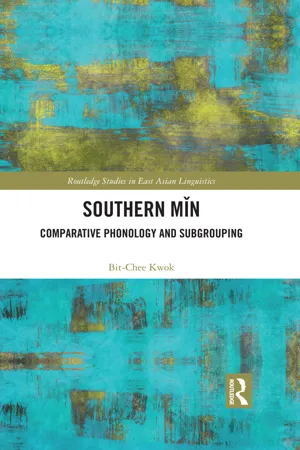
- 218 pages
- English
- ePUB (mobile friendly)
- Available on iOS & Android
About This Book
Southern M?n refers to a group of Chinese dialects spoken mainly in Southeast China and Taiwan. This group occupies a special position in the study of Chinese dialects, not only because of its large population of speakers (around 48 million) but also because of its preservation of various archaic linguistic features long lost in other dialects. In this book, B.C. Kwok applies the comparative method on new fieldwork data to reconstruct the common sound system of 'Proto-Southern M?n', from which all modern Southern M?n varieties emerged. The syllable initials, finals and tonal categories of Proto-Southern M?n are illustrated by more than 500 examples. In addition, this book offers an alternative view on the subgrouping of 12 Southern M?n varieties. It proposes that the Quánzh?u dialect and the Zh?ngzh?u dialect form the two main branches of the dialect group. This book should be of great interest to advanced students and scholars in the fields of historical linguistics and Chinese dialectology.
Frequently asked questions
Information
1
Background and methodology
1. Objectives
2. Basic information about Mǐn
Table of contents
- Cover
- Title
- Copyright
- Contents
- List of figures
- List of maps
- List of tables
- Acknowledgements
- Abbreviations
- 1 Background and methodology
- 2 Proto-Southern Mǐn initials
- 3 Proto-Southern Mǐn finals
- 4 Proto-Southern Mǐn tonal categories
- 5 Subgrouping Southern Mǐn
- 6 Conclusion
- Appendix: Proto-Southern Mǐn etyma
- References
- Index